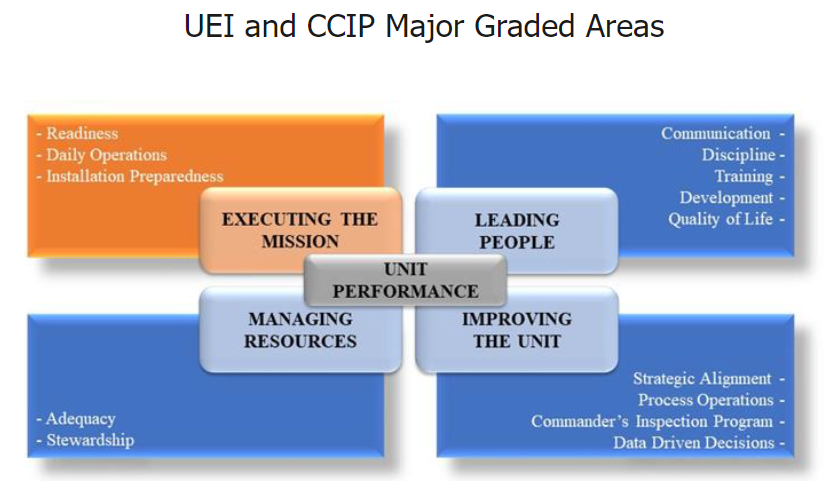Under the authority of the Wing Commander, the Wing Inspection Program, executed by the Wing IG, aims to validate and verify self-assessments conducted by subordinate commanders for accuracy. The Wing IG independently assesses the effectiveness of subordinate units and programs, utilizing IGEMS for planning, conducting, and finalizing inspections.
Unit inspections, often termed "vertical inspections," are typically carried out at or below the group level. IGs are required to conduct a minimum of one "vertical inspection" per unit per UEI cycle.
Program inspections, known as "horizontal inspections," evaluate program health across the entire Wing, encompassing areas such as fitness programs and training.
Readiness exercises (RE) are Wing-level evaluations of a unit's capability directly linked to Operational Plans (OPLANS), Concept Plans (CONPLANs), Time Phased Force Deployment Data (TPFDD) taskings, Unit Type Codes (UTCs), Mission Directives, Mission Essential Tasks/Mission Essential Task Listing (METs/METL), and/or Command guidance. Commanders should consider recent RE results when updating the Defense Readiness Reporting System (DRRS). Wing IGs must tailor readiness exercises to the organization's structure and mission, approved by the MAJCOM Commander or designee. Incorporating applicable units, including local agencies and supporting organizations, Wing IGs evaluate the unit's ability to meet readiness criteria as specified in OPLANS, CONPLANs, TPFDD taskings, UTCs, Mission Directives, METs/METL, and/or Command guidance. Wing IGs also review DRRS capability reporting for all Wing DRRS-reporting units on behalf of the Wing Commander to ensure consistency with Readiness Exercise event results.
By-Law inspections are specific program inspections mandated by higher-than Air Force policy or authority (or as directed by SecAF/CSAF) and culminate in a report signed by SAF/IG.
